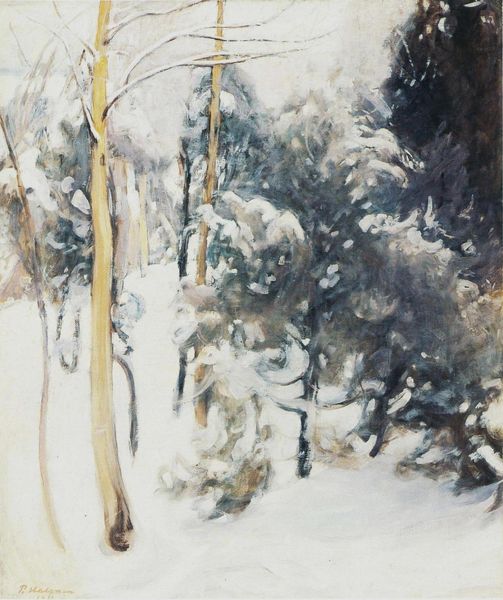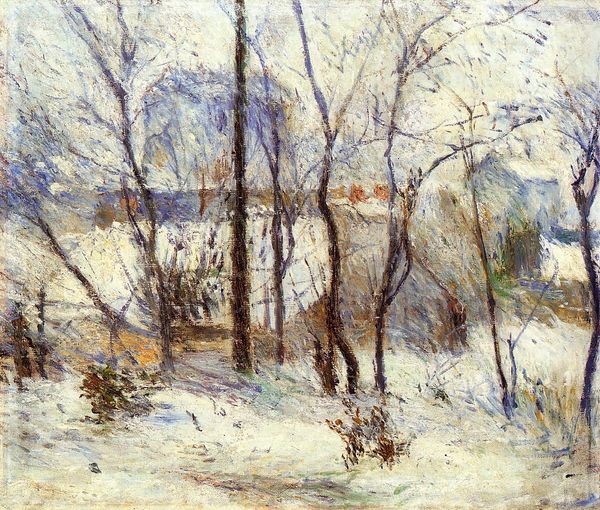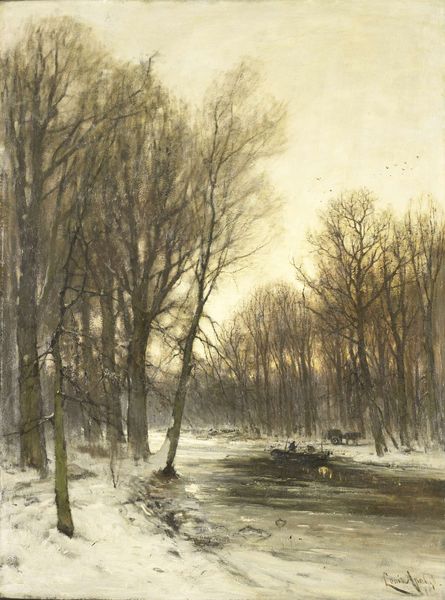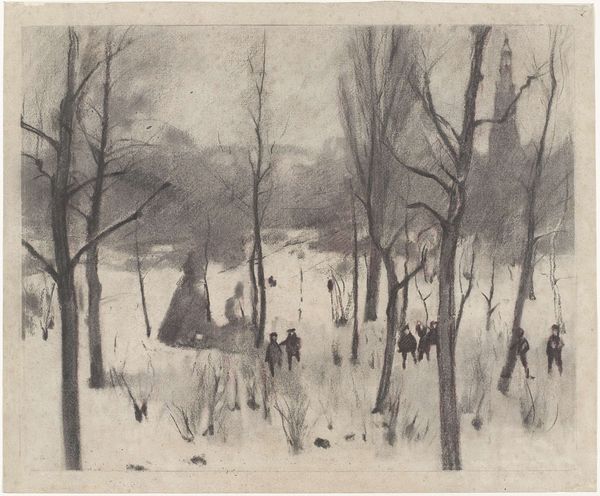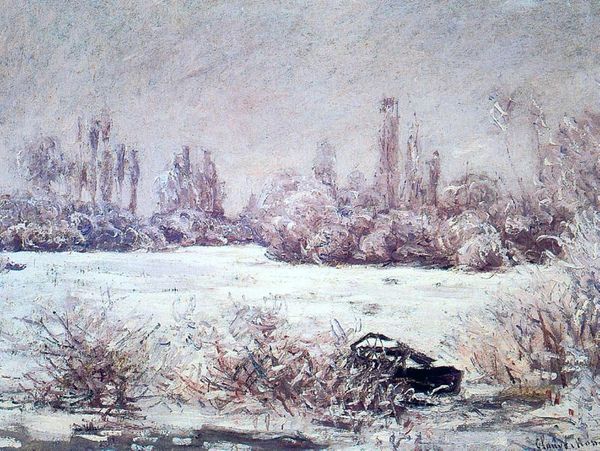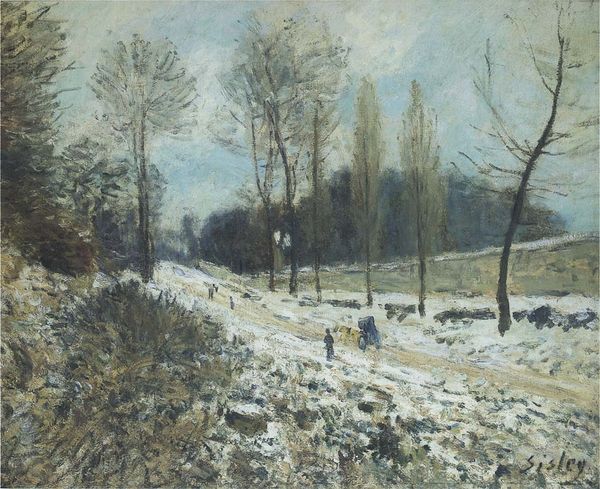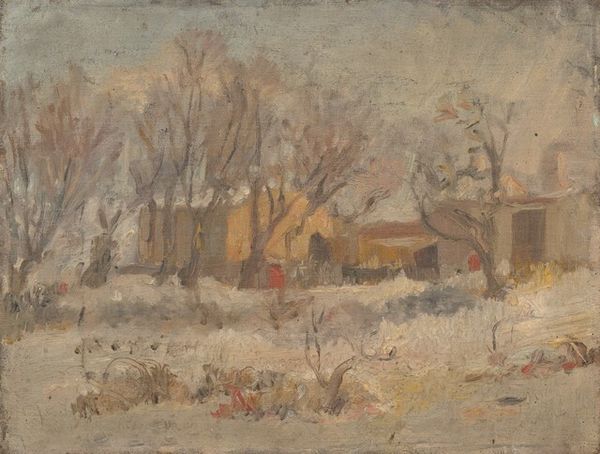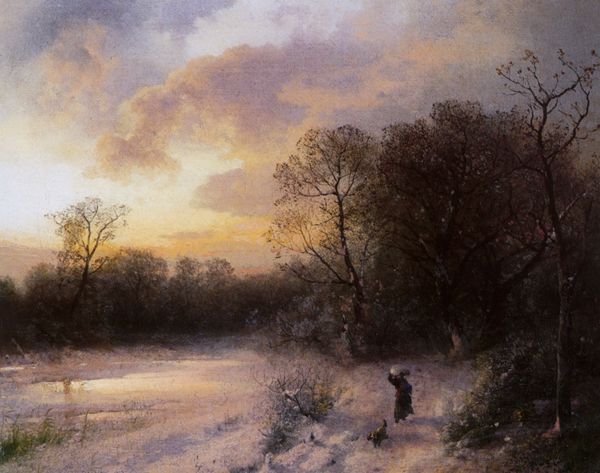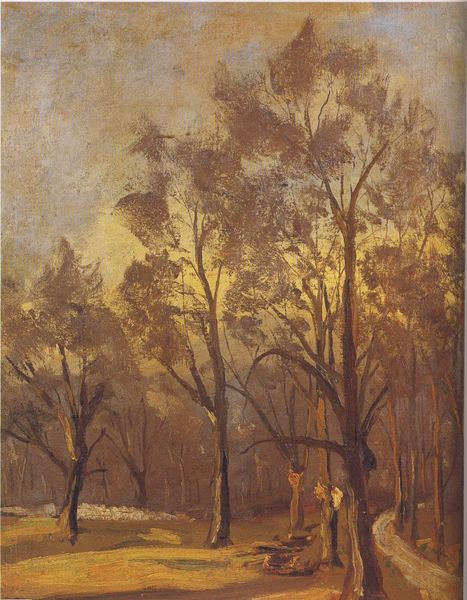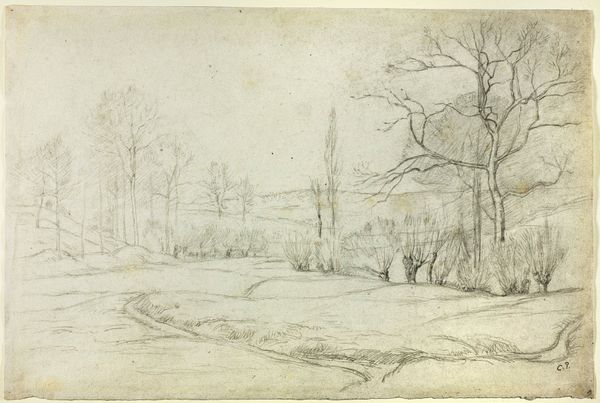
painting, plein-air, watercolor
#
tree
#
painting
#
impressionism
#
plein-air
#
landscape
#
winter
#
watercolor
#
forest
#
watercolor
Copyright: Public domain
Curator: This is Berthe Morisot's "Snowy Landscape," sometimes known as "Frost," painted in 1880. It's a watercolor piece currently held in a private collection. Editor: My first impression is one of hushed stillness. The color palette is so restrained, almost monochromatic, that the scene feels as though it’s holding its breath. Curator: Indeed. What’s fascinating about this piece is how it fits within Morisot’s broader artistic concerns. As a female impressionist, she often explored themes of domesticity and nature, providing commentary on the gendered spaces she occupied. Here, the stark winter landscape perhaps reflects the constraints and isolations women faced. The blurred quality, typical of plein-air impressionism, also speaks to the ephemeral nature of such lived experience. Editor: I see your point, but I am equally captivated by the painting’s composition. Notice how the dark clusters of trees on the left side counterbalances the snow-filled expanse on the right, drawing the eye back into the composition. The subtle washes of color create depth. It is the strategic deployment of pigment that brings form to landscape. Curator: Absolutely, the interplay of light and shadow is expertly handled. Yet, it’s also vital to consider the painting in the context of its time. Morisot painted during the Franco-Prussian War, a period of intense national anxiety and social upheaval. This quiet winter scene, therefore, might also represent the psychological landscape of France. What feels at first glance simply "still" has sociopolitical implications, as well. Editor: A compelling consideration. The "stillness," read formalistically, does function to hold these delicate elements together: if the line dissolves into full abstraction, for instance, then what is evoked gets flattened. Instead, Morisot builds atmosphere out of the interplay between near-dissolution and discrete shape. It becomes almost sculptural. Curator: This highlights, I think, why Morisot remains such a crucial figure. She simultaneously subverts and expands traditional notions of landscape painting. She invites the audience into the personal and the political through her painterly gesture. Editor: Ultimately, it's that push and pull between formal mastery and an underlying feeling that keeps this watercolor captivating, more than a century later. Curator: Agreed. It remains open to myriad interpretive strategies.
Comments
No comments
Be the first to comment and join the conversation on the ultimate creative platform.

